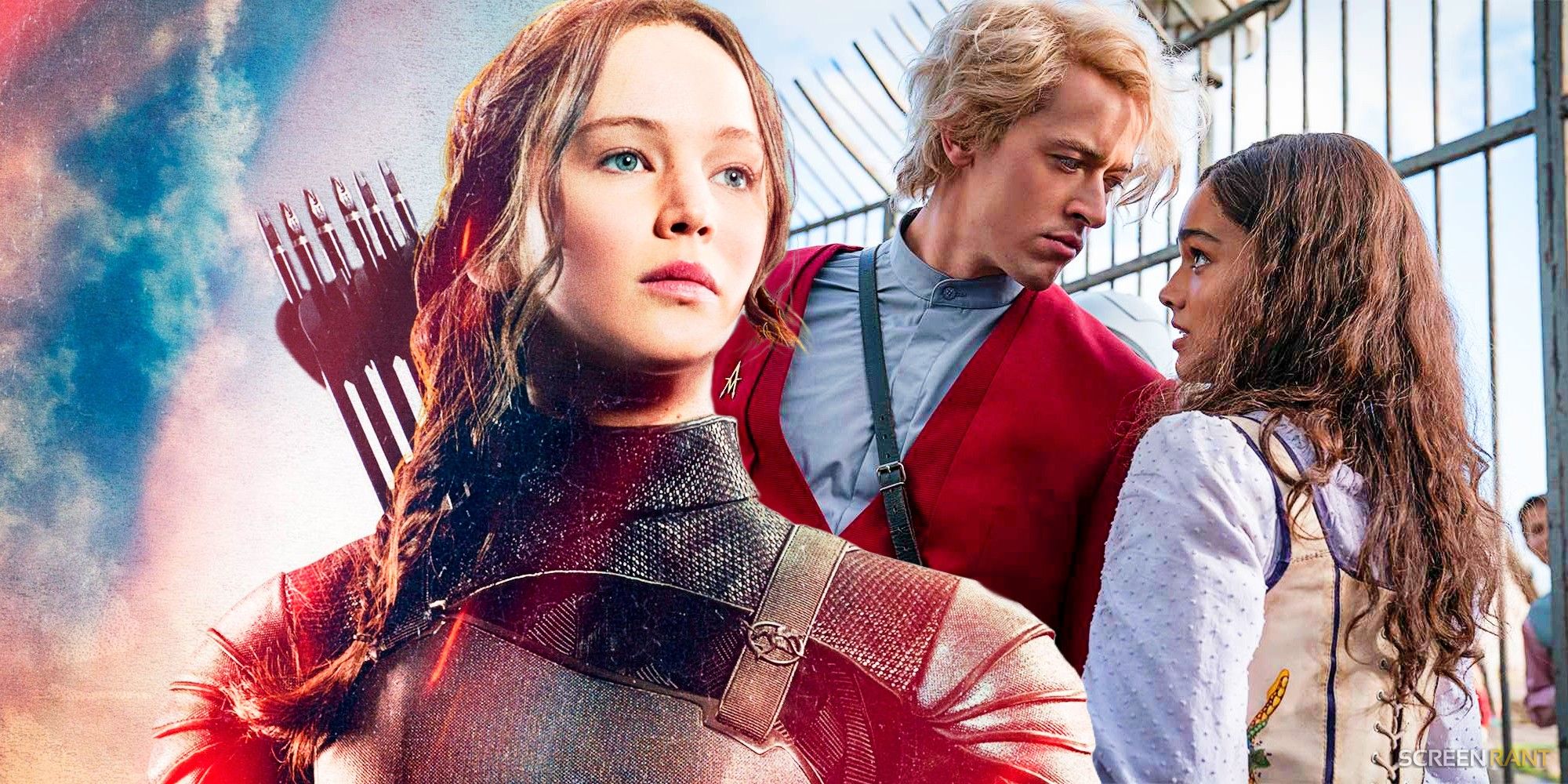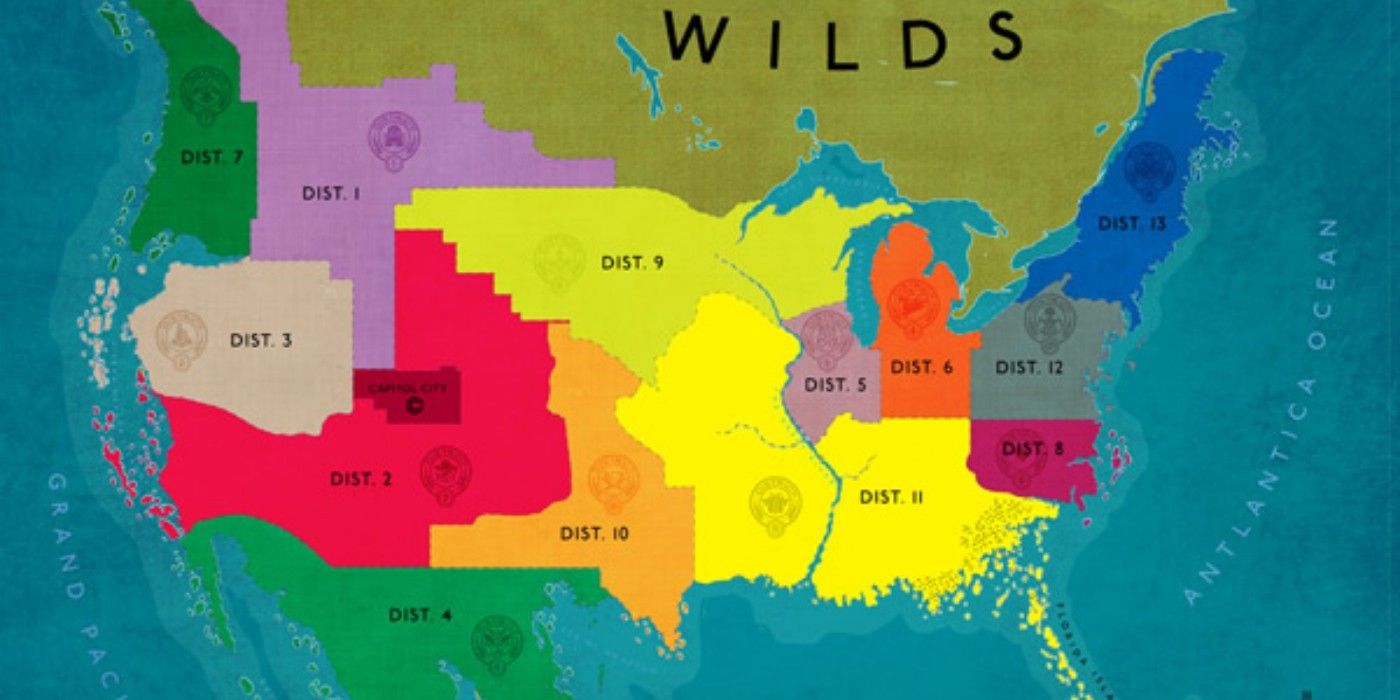Summary
- The Hunger Games series primarily focuses on District 12 in Panem, leaving the other districts and their history a mystery. Katniss only alludes to the tragedy that happened before she was born, leaving the truth about the other countries in the Hunger Games universe unknown.
- Panem is thought to be the last living civilization in the Hunger Games series, as the rest of the world is not directly mentioned. Earth is believed to have suffered from climate change, overpopulation, and destructive wars, resulting in the rise of sea levels and the collapse of modern civilization.
- Suzanne Collins, the author of The Hunger Games, has the possibility of exploring the rest of the Hunger Games world in future stories. She has written extensive backstories and history for the characters and the world, but they did not make it into the published books. Collins has shown a willingness to return to the franchise, as seen with her prequel novel, Ballad of Songbirds and Snakes.
The Hunger Games follows a sovereign state of Panem in the middle of a dystopia, but little is known about the other countries in the Hunger Games universe. Based on the popular YA books series by Suzanne Collins, the four-film franchise was set in Panem, a fictional society controlled by a federal government known as the Capitol. Several outlying districts in The Hunger Games surrounded the wealthy city that housed the Capitol citizens, which provided services and goods in exchange for protection while also subjecting the citizens of these districts to the brutal annual Hunger Games tournament.
Because the Hunger Games books and novels focus on the experiences of Katniss Everdeen, most of the focus on the world is on District 12 in Panem. Though there are several key characters throughout the stories that come from other districts, very little time is spent exploring them. Katniss’ knowledge of the world outside Panem is slim. She only alludes to the tragedy befalling the world before she was born while the truth behind the other countries in Hunger Games and their history are left as a bigger mystery.

The Hunger Games: The Ballad Of Songbirds & Snakes Ending Explained
The Hunger Games: The Ballad of Songbirds and Snakes ends ambiguously for one major character. We break down the prequel's ending & what's next.The History Of Hunger Games' Panem In Brief
It is thought that the other countries in the Hunger Games stories were the rest of the countries on Earth, as Panem was said to be located throughout North America. Whereas most of the nation resided across the United States, the boundaries spread north to Canada and south to areas in Mexico. While the series first focused on the 12 districts that were forced to participate in the annual Hunger Games event, there was a District 13 in existence. A map of Panem has revealed the locations of each district. For example, District 12, the home of Katniss Everdeen, was located in the northern Appalachian mountain region in what was once the Eastern United States.
The continent entered a dystopian state hundreds of years before the events of The Hunger Games series. As for why modern civilization collapsed, the explanation according to the story was always vague. The franchise referenced a series of ecological disasters and global conflict as a cause for the disastrous event. Based on the minimal information, however, it was presumed that the rest of the planet became uninhabitable, making Panem the Hunger Games universe's only surviving civilization.
One aspect that is repeatedly touched on in the series is the idea of nuclear war. When District 13 makes its own treaty with the Capitol, nearly 75 years before Katniss Everdeen fights in the Hunger Games, District 13 has its own healthy supply of nuclear weapons. They won’t hesitate to use them against the Capitol or the other districts if needed. There is a theory among fans then that in the Hunger Games history, perhaps each of Panem’s districts was originally a survivor settlement of a nuclear winter of sorts that then repopulated those territories over time. Panem could have annexed those different settlements, creating a larger country based on those who survived tragic events and needed one another to survive.

How To Watch The Hunger Games In Order
The Hunger Games franchise is getting revived with a new prequel film, so to prepare, here are the best ways to watch the films in orderPanem Is Thought To Be The Last Living Civilization In The Hunger Games
Though it was not directly stated, there was an insinuation that Earth fell victim to issues like climate change, overpopulation, and destructive wars. At some point, the world's landmasses changed shape while the sea levels began to rise. The Hunger Games franchise made no direct mention of other nations outside the remnants of North America, leading fans to believe that Panem was the only civilization left. Due to the rising sea levels, the landmass shrunk, and during the focus of the primary tale, Panem held around 4.5 million people.
It's surely possible that Panem, Hunger Games' sole surviving nation, was the only inhabitable continent following the collapse of modern civilization, but it's important to remember that the Hunger Games series was told from Panem's point of view. Katniss served as the narrator, but her knowledge of her nation's history could have been skewed by the Capitol. Katniss is even limited in her knowledge of other Panem Districts. It's plausible that other societies survived the disastrous events in other parts of the world in similar ways to North America and the creation of Panem. The Hunger Games' story easily implies that with a lack of travel and communication outside the continent, Panem citizens would have never learned the truth about the outside world.
All 4 The Hunger Games movies are available on Peacock Premium.
Songbirds & Snakes Could Explain What Happened To The Rest of the World
With the movie adaptation of Collins's prequel book, A Ballad of Songbirds and Snakes, there's a possibility that the series will directly address the question of what happened to the rest of the world. Since much of the new entry's story focuses on young President Snow's time at the Capitol Academy, there's a chance that Hunger Games' world history will be more accessible than it's become in Katniss' lifetime. After all, if Snow was as powerful a leader as he always seemed, it would make sense if he had more extensive and exact knowledge of the rest of the world's fate in The Hunger Games series. This could add context and dramatic weight to Panem's existence.
Snow's prequel story is set 65 years before Katniss takes a stand in the Hunger Games arena. He's just a teenager himself, but he becomes a mentor (as part of a school assignment) to one of the 10th Annual Hunger Games tributes, Lucy Gray Baird. What's interesting about Lucy is that she is from a family of Covey - traveling musicians who have come from outside Panem and travel between the different districts.
According to the novel, the Covey make their living as entertainers, traveling through the time of the First Rebellion against the Capitol. Lucy's family settled in District 12, but they weren't originally from there. If they make their living as traveling performers, chances are there are still people living outside Panem, even though the narrative never addresses that. The movie may very well expand the world of the Hunger Games beyond Panem even if the novel left details vague.
How Suzanne Collins Created Panem And The World Of The Hunger Games
According to a 2018 interview with the New York Times, Suzanne Collins came up with the idea for her Hunger Games novels while flipping through channels and thinking about ideas for a potential next book. She was just finishing up work on another one and while watching television came across footage on the news depicting active war zones interspersed with other pop culture programming. She already knew that she wanted to focus on the idea of a just war from a young perspective, but the seeds were planted by watching television.
Collins also recalled the Greek myth of Theseus having a connection to her story “immediately.” The story features seven boys and seven girls being chosen by a lottery system to face off against the Minotaur in the labyrinth, which mirrors Katniss Everdeen and the other Hunger Games tributes being pitted against one another in the arena. She credited Mary Renault’s The King Must Die with the idea of the labyrinth being more of an arena than a maze as the teens sent in had to perform for the royalty of Crete. Some of those performances included acrobatics with bulls, which is depicted in ancient artwork, indicating that some of the practices weren't just myths.
Panem’s structure drew less from mythology and more from real-world history. Collins was inspired by the 13 original United States colonies for the 13 Districts of Panem. The name for the country of Panem comes from the Latin phrase, “panem et circenses,” meaning literally bread and circuses, which is the idea of distracting a population with entertainment, which is exactly what Collins has the Hunger Games do in her novel trilogy.
Could Suzanne Collins Explore The Rest Of The Hunger Games World In The Future?
The history of the other countries in the Hunger Games stories was a mystery the readers and audience were apparently never meant to really know, but the backstory could still exist. In the same 2018 interview with the New York Times, Suzanne Collins spoke about the extensive history and backstories she wrote around the first books, none of which made it into the published story nor has she revealed the details publicly:
"I have a world of information about the characters that didn't make it into the book. With some stories revealing that could be illuminating, but in the case of The Hunger Games, I think it would only be a distraction unless it was part of a new tale within the world of Panem."
The fact that Collins herself addresses the possibility of exploring these new details in a future story within this universe is certainly exciting. She has already shown a willingness to return to the mythology with her prequel novel, Ballad of Songbirds and Snakes. With that novel now being adapted into a movie, there is a renewed interest in the franchise, which could further motivate Collins to return to the franchise with an exploration of these unresolved mysteries. This would most likely be done through another prequel, but it is possible a direct continuation of The Hunger Games movies could reveal the truth about the other countries and perhaps that they still exist.







